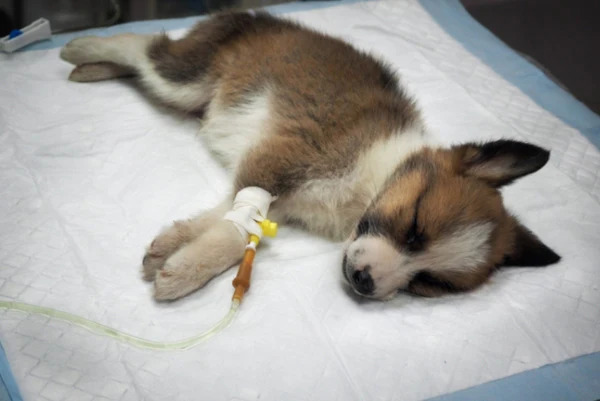Top Puppy Diseases & Prevention Tips Every Owner Needs (2025)

Dangerous Diseases in Puppies: What Every Dog Owner Should Know
Puppies are irresistibly cute and innocent, easily winning the hearts of pet lovers everywhere. But behind those adorable eyes lies a fragile creature that's vulnerable to many serious health conditions. If not properly cared for, these illnesses can pose life-threatening risks. That’s why understanding the most dangerous diseases in puppies is crucial—not just for their well-being, but for your peace of mind as a pet parent.
How to Tell If Your Puppy Is Healthy
What does a healthy puppy look like? There are several signs you can watch for. First, a shiny, smooth coat is a key indicator of good health. Their fur shouldn't be patchy, matted, or overly dry—although there are exceptions, such as pregnant females or seasonal shedding in spring and fall.
Your puppy’s eyes should be bright and clear, with no cloudiness, ulcers, or excessive discharge. The whites of the eyes should not be too red, and the pupils should be well-defined. Good eye health also means no excessive blood vessel growth and normal tear production.
The ears should be clean—no brown buildup, no itchiness, and no signs of infection. Healthy gums and teeth are also essential: the gums should be pink and moist with no ulcers, and the breath should be mild. Teeth should be firmly in place, and the tongue should move easily and show no signs of swelling.
Body temperature is another important factor. Normal body temperature for dogs ranges from 99.5°F to 101.3°F (37.5°C to 38.5°C). Puppies might have slightly higher temperatures, especially in the afternoon or after physical activity.
Dangerous Diseases in Puppies
Here are some of the most common and dangerous diseases that can affect puppies. Early detection and prevention are key to keeping them safe and healthy.
1. Parvovirus (Parvo)
Topping the list is Parvo, caused by the Canine Parvovirus (CPV). This highly contagious virus is especially lethal for puppies under 6 months old. It spreads through direct contact or indirectly through contaminated feces, surfaces, or even people.
Symptoms include bloody diarrhea, vomiting, loss of appetite, and lethargy. Puppies may become weak and spend most of their time lying down. Fortunately, Parvo is preventable with regular vaccinations. If the mother dog is vaccinated, she can pass on temporary immunity to her puppies through nursing. Without prompt treatment, Parvo can cause internal bleeding, leading to severe anemia and death.
2. Canine Distemper (Care)
Canine Distemper, often referred to as "Care" in some regions, is another deadly disease that spreads rapidly through airborne droplets or shared food and water. It commonly affects puppies and can cause neurological damage, weight loss, and a high mortality rate.
There is no specific cure for Distemper. Treatment focuses on maintaining hydration, replenishing electrolytes, and preventing secondary infections. Because of the seriousness of the disease, always consult a vet instead of attempting home remedies.

3. Intestinal Parasites
Many puppies are born with or acquire intestinal parasites like roundworms or hookworms. Signs include diarrhea, bloating, and digestive discomfort. Most puppies are infected early on—sometimes through the mother's milk. Vets often prescribe deworming medications to help eliminate the worms safely. Monthly deworming is strongly recommended during the first few months of life.
4. Heartworm Disease
Heartworms (Dirofilaria immitis) are a serious threat to young dogs. Transmitted by mosquitoes, heartworm larvae travel through the bloodstream and eventually lodge in the heart and lungs, where they mature and cause blockages.
Symptoms may take 6–7 months to appear. By then, the damage may be severe—leading to fatigue, loss of appetite, weight loss, and even heart failure. Monthly heartworm preventatives are highly effective and should be part of your regular pet care routine.
5. Coccidia Infection
Coccidia are intestinal parasites that thrive in stagnant water and unclean environments. Puppies can ingest these microscopic organisms, which invade the lining of the intestines. Symptoms include bloody diarrhea and dehydration. Puppies in unclean or damp environments are especially at risk.
Veterinarians can prescribe antiparasitic medication to treat Coccidia infections. Clean, dry living spaces and access to fresh water are crucial in preventing this condition.
6. Hypoglycemia
Young puppies are prone to hypoglycemia (low blood sugar), especially if they don’t eat enough or skip meals. This can lead to extreme fatigue, unresponsiveness, and even seizures.
To prevent hypoglycemia, maintain a regular feeding schedule with nutritious meals. In severe cases, a vet may prescribe glucose supplementation or other treatments to stabilize their condition.
How to Raise a Healthy, Fast-Growing Puppy
Want to raise a puppy that’s strong, healthy, and happy? It all starts with proper nutrition and care.
Nutrition Matters
Understanding your puppy’s breed and nutritional needs is key. From 8 weeks old up to adolescence, puppies grow rapidly and need plenty of nutrients to fuel their development. This stage is when they learn important behaviors and skills like running, chasing, playing, and socializing.
Feed your puppy a balanced diet that includes protein, fat, vitamins, and minerals. Avoid overfeeding—divide their meals into three portions per day. Puppies have delicate digestive systems, so it's important to watch for signs of upset stomach or diarrhea.

Best Foods for Puppy Growth
Puppy food should be easy to digest and packed with nutrients. Ideal choices include rice porridge, finely chopped meat, cornmeal, and organ meats like liver (in moderation). Avoid pork, which can be hard to digest.
Commercial dry kibble made specifically for puppies can also help support digestion, reduce stool odor, and ensure they get the right vitamins and minerals. Make sure your puppy always has access to clean water and enough time to rest after meals.
Taking care of a puppy is a joyful but serious responsibility. Puppies are vulnerable to many life-threatening diseases, so understanding the risks—and how to prevent them—is one of the best things you can do as a pet parent.
Stay informed, follow your vet’s advice, and give your puppy the love and care they deserve. In return, you’ll gain a loyal companion for years to come.
